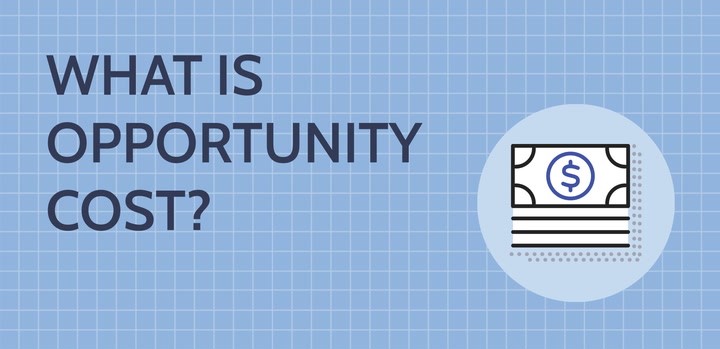Opportunity Cost: What Is It?
Opportunity cost is the value lost when you select one course of action over another. It’s not just about money, but also about the time, resources, or potential benefits you forego. Think of it this way: whenever you make a decision, there are other paths you could have taken. Understanding the opportunity cost helps you weigh these different paths and make informed choices, whether you’re deciding how to spend your weekend or where to invest your business resources. In essence, it’s about asking yourself: “Would my time or effort be better directed elsewhere?”
This revised section keeps the core concept of opportunity cost while using simpler language and avoiding technical jargon. It emphasizes the broader impact of choices and highlights the decision-making aspect. The connective phrases “Think of it this way” and “In essence” help improve clarity and flow. The length is similar to the original example, with two concise paragraphs.
Why Every Decision Matters
Imagine you’re running an online store. Every choice you make, from product selection to marketing strategies, has an impact. But there’s a hidden factor at play: the opportunity cost. This concept might sound unfamiliar, but it simply means that every decision comes with a trade-off.
The good news? Many e-commerce entrepreneurs make smart choices intuitively, even if they haven’t encountered the term “opportunity cost.” However, a deeper understanding empowers them to make truly strategic decisions. Let’s delve into the practical side of this concept and see how it specifically applies to the world of online stores.
The Technical Explanation
While the price tag tells you how much money an item costs, it doesn’t reveal the whole story. Here’s where opportunity cost comes in. It’s the trade-off involved in any decision – the other options you give up when you choose one path.
Think of it this way: every choice has a ripple effect. When you decide to buy something, you’re not just spending money, you’re also giving up the chance to use those resources on something else. That “something else” could be another purchase, an investment, or even just some free time.
The key takeaway? Opportunity cost isn’t just about money. It’s about the bigger picture of what you’re giving up when you make a decision.
Real-World Opportunity Costs
Let’s see how opportunity cost plays out in everyday situations. Imagine a bakery owner who decides to dedicate all their ovens to baking popular sourdough bread. This choice ensures a steady stream of customers, but it also means they can’t bake other delicious treats, like muffins or cookies. The opportunity cost here is the potential profit and customer base from those other baked goods.
Similarly, a student choosing to spend their evenings studying for calculus gives up the chance to participate in a club or hang out with friends. In this case, the opportunity cost is the social interaction and enjoyment they might have had.
Opportunity cost isn’t just about financial gain. It’s about the trade-offs we make with our resources, including time and effort. While one choice might seem more profitable at first glance, it might require significantly more time or work compared to another option. For instance, a freelancer might choose a high-paying project with a tight deadline. The opportunity cost here could be the chance to take on several smaller projects with less stress.
Remember, opportunity cost can be a double-edged sword. The bakery owner focusing on sourdough might find it becomes a huge success, outweighing the lost profits from other pastries. Likewise, the student who aces their calculus exam might feel the sacrifice of missing out on social events was worth it.
The key takeaway is that every decision carries an unseen cost. By understanding opportunity cost, we can make more informed choices, considering not just the immediate benefits but also the potential opportunities we’re giving up.
Opportunity Cost in Action
Opportunity cost isn’t just a fancy term – it’s a powerful tool for evaluating business choices before taking the plunge. While predicting the future is impossible, considering the potential outcomes of different options helps businesses make informed decisions. This is crucial because every company, from a brand-new online store to a global giant, has limited resources. By weighing the pros and cons of each path, businesses can ensure they’re getting the most out of their valuable resources, minimizing the potential for missed opportunities.
This revised version keeps the core message of the original text but uses simpler language and avoids the repetition of “opportunity cost.” It emphasizes the practical application and injects connective phrases like “This is crucial because” and “By weighing the pros and cons” to enhance clarity.
How Opportunity Costs Particularly Affect Online Retailers
Every decision an online seller makes carries an unseen cost – the opportunity cost. Just like farmers and property owners face trade-offs, e-commerce merchants navigate a world of limited resources and enticing options.
The most immediate example lies in inventory. A seller’s budget isn’t just about buying products – it’s also about storage space. Choosing one item over another means sacrificing the potential profit from the one left behind. This extends to product creation as well. For merchants who craft their own goods, the decision of which materials to use involves a similar opportunity cost. Every dollar spent on one material means one less dollar available for another.
But the trade-offs don’t stop there. Even seemingly simple aspects like shipping involve opportunity cost. Offering a wider range of shipping options might please customers but comes at a higher price. A simpler, cheaper approach may save money but potentially lose sales. Similar choices arise when considering adding new product lines, hiring staff, or even expanding from a home office to a dedicated space. In every case, the resources dedicated to one path mean sacrificing the potential of another.
By understanding opportunity cost, e-commerce entrepreneurs can make informed decisions. They can weigh the potential gains and losses of each option, maximizing their resources and ultimately their success.





